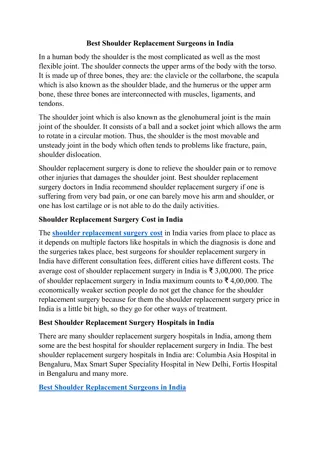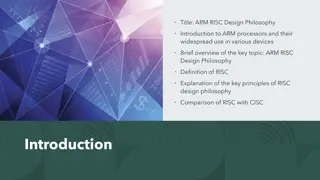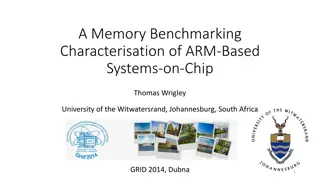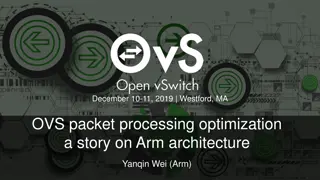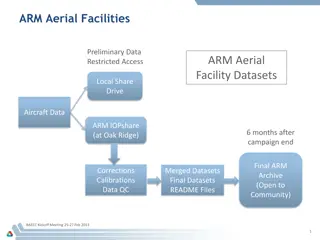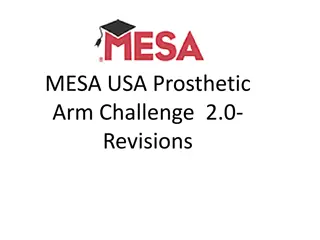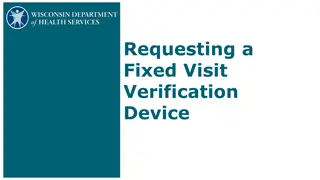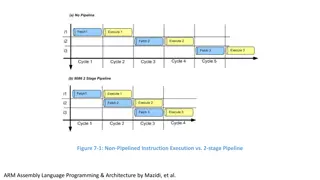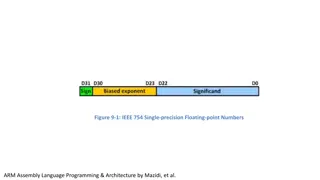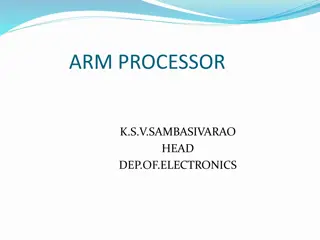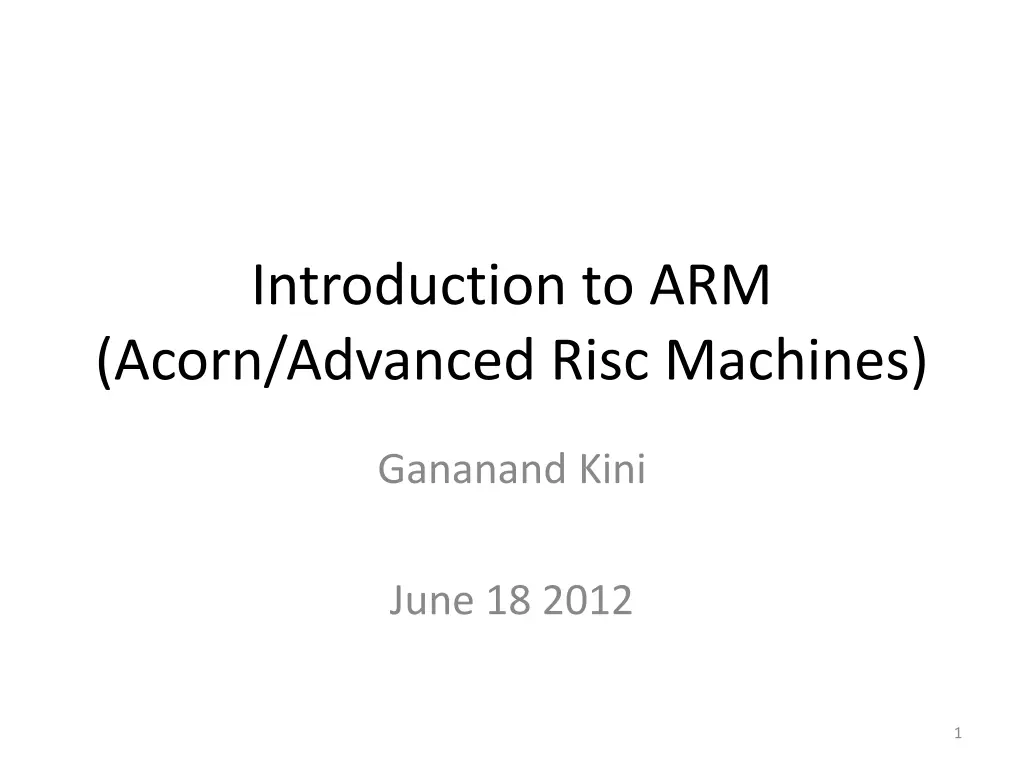
Introduction to ARM Basics and Features
Explore the fundamentals of ARM architecture, including its origins, core features, and hardware aspects. Dive into practical labs and optimization techniques while referencing essential resources for ARM development.
Download Presentation

Please find below an Image/Link to download the presentation.
The content on the website is provided AS IS for your information and personal use only. It may not be sold, licensed, or shared on other websites without obtaining consent from the author. If you encounter any issues during the download, it is possible that the publisher has removed the file from their server.
You are allowed to download the files provided on this website for personal or commercial use, subject to the condition that they are used lawfully. All files are the property of their respective owners.
The content on the website is provided AS IS for your information and personal use only. It may not be sold, licensed, or shared on other websites without obtaining consent from the author.
E N D
Presentation Transcript
Introduction to ARM (Acorn/Advanced Risc Machines) Gananand Kini June 18 2012 1
Acknowledgements Prof. Rajeev Gandhi, Dept. ECE, Carnegie Mellon University Prof. Dave O Hallaron, School of CS, Carnegie Mellon University Xeno Kovah Dana Hutchinson Dave Keppler Jim Irving Dave Weinstein Geary Sutterfield 2
Co-requisites Intro x86 Intermediate x86 would be very helpful 3
Book(s) ARM System Developer's Guide: Designing and Optimizing System Software by Andrew N. Sloss, Dominic Symes, and Chris Wright 4
Schedule Day 1 Part 1 Intro to ARM basics Lab 1 (Fibonacci Lab) Day 1 Part 2 More of ARMs features Lab 2 (BOMB Lab) Day 2 Part 1 ARM hardware features Lab 3 (Interrupts lab) Day 2 Part 1.5 GCC optimization Lab 4 (Control Flow Hijack Lab) Day 2 Part 2 Inline and Mixed assembly Atomic instructions Lab 5 (Atomic Lab) 5
Introduction Started as a hobby in microcontrollers in high school with robotics Background in software development and electrical engineering In school, took many courses related to micro controllers and computer architecture Small amount of experience with assembly 7
Obligatory XKCD 8 Source: http://xkcd.com/676/
Short Review short ByteMyShorts[2] = {0x3210, 0x7654} in little endian? Answer: 0x10325476 int NibbleMeInts = 0x4578 in binary, in octal? (no endianness involved) Answers: 0b0100 0101 0111 1000 0b0 100 010 101 111 000 0o42570 (Take 3 bits of binary and represent in decimal) Two s complement of 0x0113 Answer: 0xFEED What does the following code do? (Part of output from gcc at O3) movl (%rsi), %edx movl (%rdi), %eax xorl %edx, %eax xorl %eax, %edx xorl %edx, %eax movl %edx, (%rsi) movl %eax, (%rdi) ret How can we optimize above for code size? Could this macro be used for atomic operations? 9
Well learn how and why This turns into int main(void) { printf( Hello world!\n ); return 0; } 10
And then into the following Generated using objdump 11
Introduction to ARM Acorn Computers Ltd. (Cambridge, England) Nov. 1990 First called Acorn RISC Machine, then Advanced RISC Machine Based on RISC architecture work done at UCal Berkley and Stanford ARM only sells licenses for its core architecture design Optimized for low power & performance VersatileExpress board with Cortex-A9 (ARMv7) core will be emulated using Linaro builds. This also means some things may not work. You ve been warned. 12
ARM architecture versions Architecture Family ARMv1 ARM1 ARMv2 ARM2, ARM3 ARMv3 ARM6, ARM7 ARMv4 StrongARM, ARM7TDMI, ARM9TDMI ARMv5 ARM7EJ, ARM9E, ARM10E, Xscale ARMv6 ARM11, ARM Cortex-M ARMv7 ARM Cortex-A, ARM Cortex-M, ARM Cortex-R ARMv8 Not available yet. Will support 64-bit addressing + data ARM Architecture. Wikipedia, The Free Encyclopedia. Wikimedia Foundation, Inc. 3 March 2012. Web. 3 March 2012. 13
ARM Extra Features Similar to RISC architecture (not purely RISC) Variable cycle instructions (LD/STR multiple) Inline barrel shifter 16-bit (Thumb) and 32-bit instruction sets combined called Thumb2 Conditional execution (reduces number of branches) Auto-increment/decrement addressing modes Changed to a Modified Harvard architecture since ARM9 (ARMv5) Extensions (not covered in this course): TrustZone VFP, NEON & SIMD (DSP & Multimedia processing) 14
Registers Total of 37 registers available (including banked registers): 30 general purpose registers 1 PC (program-counter) 1 CPSR (Current Program Status Register) 5 SPSR (Saved Program Status Register) The saved CPSR for each of the five exception modes Several exception modes For now we will refer to User mode 15
Registers r0 r1 r2 r3 r4 r5 r6 r7 r8 r9 Stack Pointer (SP) The address of the top element of stack. Link Register (LR) Register used to save the PC when entering a subroutine. Program Counter (PC) The address of next instruction. (ARM mode points to current+8 and Thumb mode points to current+4) Current Program Status Register (CPSR) Results of most recent operation including Flags, Interrupts (Enable/Disable) and Modes R10 (SL) r11 (FP) r12 (IP) r13 (SP) r14 (LR) r15 (PC) R12 or IP is not instruction pointer, it is the intra procedural call scratch register CPSR 16
Instruction cycle Start Fetch fetch next instruction from memory Execute execute fetched instruction Decode decode fetched instruction End 17
ARM vs. x86 Endianness (Bi-Endian) Instructions are little endian (except on the R profile for ARMv7 where it is implementation defined) Data endianness can be mixed (depends on the E bit in CPSR) Fixed length instructions Instruction operand order is generally: OP DEST, SRC (AT&T syntax) Short instruction execution times Register differences (CPSR, SPSR ) Has a few extra registers Operations only on registers not memory (Load/Store architecture) Pipelining & Interrupts Exceptions Processor Modes Code & Compiler optimizations due to the above differences 18
ARM Data sizes and instructions ARMs mostly use 16-bit (Thumb) and 32-bit instruction sets 32-bit architecture Byte = 8 bits (Nibble is 4 bits) [byte or char in x86] Half word = 16 bits (two bytes) [word or short in MS x86] Word = 32 bits (four bytes) [Doubleword or int/long in MS x86] Double Word = 64 bits (eight bytes) [Quadword or double/long long in MS x86] Source: http://stackoverflow.com/questions/39419/visual-c-how-large-is- a-dword-with-32-and-64-bit-code 19
The Life of Binaries Starts with c or cpp source code written by us A compiler takes the source code and generates assembly instructions An assembler takes the assembly instructions and generates objects or .o files with machine code The linker takes objects and arranges them for execution and generates an executable. (A dynamic linker will insert object code during runtime in memory) A loader prepares the binary code and loads it into memory for OS to run 20
The tools we will use Compiler gcc for ARM Assembler gcc or as (gas) for ARM Linker gcc for ARM or gold Loader gcc for ARM and ld-linux for ARM 21
At Power on ROM has code that has been burned in by SoC vendor (similar to BIOS but not the same) Use of memory mapped IO different memory components (can be a mix of ROM, SRAM, SDRAM etc.) Contains Code for memory controller setup Hardware and peripheral init (such as clock and timer) A boot loader such as Fastboot, U-boot, X-Loader etc. 22
U-Boot process 23 Source: Balducci, Francesco.http://balau82.wordpress.com/2010/04/12/booting-linux-with-u-boot-on-qemu-arm/
U-boot exercise on a Versatile PB Run the following in ~/projects/uboot- exercise: qemu-system-arm -M versatilepb -m 128M -kernel flash.bin -serial stdio flash.bin contains: U-boot binary (at 0x10000 in image) a root filesystem (at 0x210000 in image) the linux kernel (at 0x410000 in image) U-boot has bootm <address> to boot code 24 Source: Balducci, Francesco.http://balau82.wordpress.com/2010/04/12/booting-linux-with-u-boot-on-qemu-arm/
U-boot exercise U-boot was patched in earlier example b/c it did not support ramdisk usage with bootm command. Good nough for simulation. U-boot uses bootm <kernel address> <rootfs image address> to boot U-boot relocates itself to specific address (0x1000000) before loading kernel. 25 Source: Balducci, Francesco.http://balau82.wordpress.com/2010/04/12/booting-linux-with-u-boot-on-qemu-arm/
PBX w/ Cortex-A9 Memory Map 26 Source: http://infocenter.arm.com/help/index.jsp?topic=/com.arm.doc.dui0440b/Bbajihec.html
Cortex M3 Memory Map 27 Source: http://www.joral.ca/blog/wp-content/uploads/2009/10/CortexPrimer.pdf
ARM Architecture 28 Source: http://www.arm.com/files/pdf/armcortexa-9processors.pdf
Instruction cycle Start Fetch fetch next instruction from memory Execute execute fetched instruction Decode decode fetched instruction End 29
Behavior of the PC/R15 PC Program counter (like the x86 EIP) has the address of next instruction to execute When executing an ARM instruction, PC reads as the address of current instruction + 8 When executing a Thumb instruction, PC reads as the address of current instruction + 4 When PC is written to, it causes a branch to the written address Thumb instructions cannot access/modify PC directly 30
That means 00008380 <add>: 8380: 8382: 8384: 8386: 8388: 838a: 838c: 838e: 8390: 8392: 8396: 8398: 839a: When executing instruction @ x8382 b480 b083 af00 6078 6039 687a 683b 18d3 4618 f107 070c 46bd bc80 4770 push sub add str str ldr ldr adds mov add.w r7, r7, #12 mov sp, r7 pop {r7} bx lr {r7} sp, #12 r7, sp, #0 r0, [r7, #4] r1, [r7, #0] r2, [r7, #4] r3, [r7, #0] r3, r2, r3 r0, r3 PC=0x00008386 31
ARM Assembly and some conventions Now uses Unified Assembly Language (combines ARM & Thumb instruction sets and code allowed to have intermixed instructions) General form (there are exceptions to this): <Instruction><Conditional>{S bit} <destination> <source> <Shift/ operand/immediate value> Load/Store architecture means instructions only operate on registers, NOT memory Most of the instructions expect destination first followed by source, but not all 32
ARM Assembly and some conventions contd <dst> will be destination register <src> will be source register <reg> will be any specified register <imm> will be immediate value <reg|cxfz..> whatever follows | means with the specified flag enabled 33
Conditional Flags Indicate information about the result of an operation N Negative result received from ALU (Bit 31 of the result if it is two s complement signed integer) Z Zero flag (1 if result is zero) C Carry generated by ALU V oVerflow generated by ALU (1 means overflow) Q oVerflow or saturation generated by ALU (Sticky flag; set until CPSR is overwritten manually) Flags are in a special register called CPSR (Current Program Status Register) Flags are not updated unless used with a suffix of S on instruction 34
Current/Application Program Status Register (CPSR/APSR) 31 30 29 28 27 26 25 24 23 22 21 20 19 18 17 16 15 14 13 12 11 10 9 8 7 6 5 4 3 2 1 0 N Z C V Q E A I F T _ M O D E N Negative flag Z Zero flag C Carry flag V Overflow flag Q Sticky overflow I 1: Disable IRQ mode F 1: Disable FIQ mode T 0: ARM state 1: Thumb state _MODE Mode bits 35
Push and Pop operations PUSH <reg list> - decrements the SP and stores the value in <reg list> at that location POP <reg list> - Stores the value at SP into <reg list> and increments the SP Both operations only operate on SP 36
PUSH operation INSTRUCTION: push {r7, lr} 0x7EFFF950 0x00008010 0x7EFFF954 0x0A0B0C0D 0x0A0B0C0D 0x7EFFF958 0x0a012454 0x0a012454 0x0a012454 0x7EFFF95C 0x00008350 0x00008350 0x00008350 SP 0x7EFFF958 0x7EFFF954 0x7EFFF950 R7 0x0A0B0C0D 0x0A0B0C0D 0x0A0B0C0D LR 0x00008010 0x00008010 0x00008010 37
Arithmetic operations ADD: add <dst> = <src> + <imm> or <src> + <reg> ADC: add with carry <dst> = <src|c> + <imm> or <src|c> + <reg> SUB: subtract <dst> = <src> - <imm> or <src> - <reg> SBC: subtract with carry <dst> = <src|c> - <imm> or <src|c> - <reg> RSB: reverse subtract <dst> = <imm> - <src> or <reg> - <src> RSC: reverse subtract with carry <dst> = <imm|!c> - <src> or <reg|!c> - <src> 38
Closer look at Example 1.c 00008354 <main>: 8354: 8356: 8358: 835a: 835e: 8360: 8364: 8366: 8368: 836a: 836e: 8370: 8374: 8376: 837a: 837c: 837e: b580 b084 af00 f04f 030a 607b f04f 030c 60bb 6878 68b9 f000 f809 60f8 f04f 0300 4618 f107 0710 46bd bd80 bf00 push sub add mov.w str mov.w str ldr ldr bl str mov.w mov add.w mov pop nop {r7, lr} sp, #16 r7, sp, #0 r3, #10 r3, [r7, #4] r3, #12 r3, [r7, #8] r0, [r7, #4] r1, [r7, #8] 8380 <add> r0, [r7, #12] r3, #0 r0, r3 r7, r7, #16 sp, r7 {r7, pc} int main(void) { int a, b, c; a=10; b=12; c=add(a,b); return 0; } int add(int a, int b) { return a+b; } 00008380 <add>: 8380: 8382: 8384: 8386: 8388: 838a: 838c: 838e: 8390: 8392: 8396: 8398: 839a: The highlighted instruction is a special form of SUB. In this case means: SP = SP - 16 b480 b083 af00 6078 6039 687a 683b 18d3 4618 f107 070c 46bd bc80 4770 push sub add str str ldr ldr adds mov add.w mov pop bx {r7} sp, #12 r7, sp, #0 r0, [r7, #4] r1, [r7, #0] r2, [r7, #4] r3, [r7, #0] r3, r2, r3 r0, r3 r7, r7, #12 sp, r7 {r7} lr Thumb instructions are intermixed with ARM instructions. 39
SBC & RSB operations INSTRUCTION: MEANS : r0 = r0 r1 NOT(C) r0 = r1 r0 (No flags updated) sbc r0, r0, r1 rsb r0, r0, r1 R0 0xF5F4F3FD 0x0A0B0C03 After Operation R1 0x0A0B0C0D 0x0A0B0C0D CPSR 0x20000010 0x20000010 R0 0x0000000A 0x0000000A Before Operation R1 0x0A0B0C0D 0x0A0B0C0D CPSR 0x20000010 0x20000010 40
Arithmetic operations part 2 MUL: <dst> = <reg1> * <reg2> MLA: <dst> = (<reg1> * <reg2>) + <reg3> MLA{S}{<c>} <Rd>, <Rn>, <Rm>, <Ra> where <Rd> is destination register, <Rn> & <Rm> are the first and second operands respectively and <Ra> is the addend register MLS: <dst> = <reg3> - (<reg1> * <reg2>) Multiply operations only store least significant 32 bits of result into destination Result is not dependent on whether the source register values are signed or unsigned values 41
example2.c int main(void) { int a, b, c, d; a=2; b=3; c=4; d = multiply(a,b); printf( a * b is %d\n , d); d = multiplyadd(a,b,c); printf( a * b + c is %d\n , d); return 0; } 000083b8 <multiply>: 83b8: fb01 f000 mul.w 83bc: 4770 bx 83be: bf00 nop r0, r1, r0 lr 000083c0 <multiplyadd>: 83c0: fb01 2000 mla 83c4: 4770 bx 83c6: bf00 nop r0, r1, r0, r2 lr int multiply(int a, int b) { return (a*b); } Int multiplyadd(int a, int b, int c) { return ((a*b)+c); } 42
MLA & MLS operations INSTRUCTION: mla r0, r0, r1, r2 MEANS : r0 = r0 * r1 + r2 mls r0, r0, r1, r2 r0 = r2 (r0 * r1) (No flags updated) R0 0x0000008F 0xFFFFFF77 R1 0x0000000E 0x0000000E After Operation R2 0x00000003 0x00000003 CPSR 0x20000010 0x20000010 R0 0x0000000A 0x0000000A R1 0x0000000E 0x0000000E Before Operation R2 0x00000003 0x00000003 CPSR 0x20000010 0x20000010 43
Arithmetic operations part 3 PLEASE NOTE: These instructions are only available on Cortex-R profile SDIV Signed divide UDIV Unsigned divide On the Cortex-A profile there is no divide operation 44
Example x.s 000083e4 <divide>: 83e4: 83e8: 83ec: ; (mov r0, r0) e710f110 e12fff1e e1a00000 sdiv bx nop r0, r0, r1 lr 000083f0 <unsigneddivide>: 83f0: 83f4: 83f8: ; (mov r0, r0) e730f110 e12fff1e e1a00000 udiv bx nop r0, r0, r1 lr 45
Using the emulator cd ~/projects/linaro ./startsim Password is passw0rd To copy <localfile> to </path/to/file> on emulator: scp P 2200 <localfile> root@localhost:</path/to/file> To copy </path/to/file> from emulator to <localfile>: scp P 2200 root@localhost:</path/to/file> <localfile> 46
objdump introduction dumps the objects in an ELF (Executable Linkable Format) file. objects that are in a form before they are linked -g gdb option for gcc adds debug symbols that objdump can read -d option for objdump used for dissassembling (get assembly code from the ELF format) 47
objdump usage helloworld.c objdump d helloworld | less int main(void) { printf( Hello world!\n ); return 0; } 48
Try dividing now on the emulator Goto ~/projects/examples Copy example1 to divexample Replace the add () function in example1.c with divide and return (a/b) Run make clobber && make Disassemble objdump d example1 | less What do you see? 49
NOP Instruction A most interesting instruction considering it does nothing ARM Reference Manual mentions that this instruction does not relate to code execution time (It can increase, decrease or leave the execution time unchanged). Why? Primary purpose is for instruction alignment. (ARM and Thumb instructions together What could go wrong?) Can also be used as part of vector tables In some microcontrollers, it is also used for synchronization of pipeline. 50


